By Dawn Stevens
Over 20 years ago, Dr. JoAnn Hackos developed the information process maturity model, designed to evaluate the overall health of a content organization. Working with a dozen leaders from respected corporations, she identified eight key characteristics that clearly influenced the success of the writing departments. This list expanded to ten characteristics in the years that followed:
- Organizational structure
- Hiring and training practices
- Collaboration
- Budgeting
- Estimating, scheduling, and tracking
- User awareness
- Planning
- Information design
- Quality assurance
- Change management
Clearly, technical communication has evolved significantly since JoAnn’s original research—we are no longer technical writers creating books using a desktop publishing system. We are architects, UX designers, taxonomists, and so much more, creating topics, videos, and artificial intelligence using a plethora of tools and standards. New delivery mechanisms and development tools have changed what we do and how we work. Are these same characteristics still important today? Are they still able to accurately predict the performance of an information development team?
The Center for Information Development Management (CIDM), a membership organization founded by JoAnn, monitors these questions regularly. Members participate in monthly roundtable discussions, conference presentations, and yearly benchmarking studies designed to identify trends in the industry and adjust the definition of maturity accordingly. A review of data from 2017 indicates that while specific details within each characteristic have certainly transformed, the characteristics themselves seem to stand the test of time.
Change Management
If one thing remains unwavering over time, it’s that change is a constant. Technical communicators must be ready to adapt. In a 2017 CIDM benchmarking study, the importance of change management was highlighted by the frequency of reorganizations that affect the technical communication department. Figure 1 shows the frequency of reorganizations within the CIDM membership base. Almost three-quarters of the represented corporations reorganize at least once every five years, and only 15 percent have never reorganized within the respondent’s tenure.
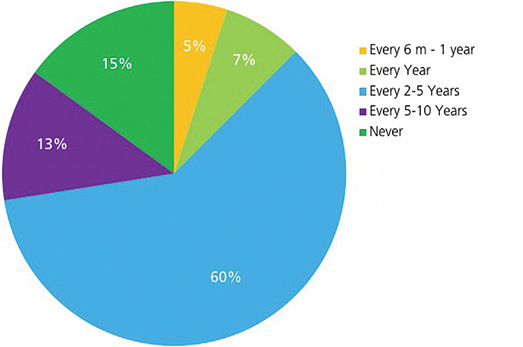
Reorganizations occur for many reasons: companies merge with or acquire other companies; sites close or are relocated; departments centralize or decentralize. Regardless of the reason, mature information development organizations continue to function in the chaos these changes bring. They have strong change management practices that ensure team members are kept well informed and that content continues to be produced at the expected rate and quality. Mature teams adjust quickly and even find ways to improve in the process.
Organizational Structure
With the many reorganizations facing information development teams, it’s no surprise to observe a pendulum swing between centralized and decentralized organizational structures. Figure 2 shows the current distribution among CIDM members.
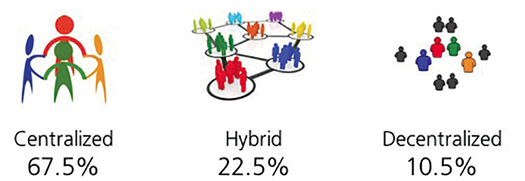
Although there are advantages to both structures, organizations find the most success when they find a way to centralize key resources, ensuring that content, regardless of where it is developed, conforms to a single corporate style and standard, is readily accessible by all information developers, and can be easily reused across products and groups.
Centralized or not, the CIDM benchmark shows that the majority of information development groups are located either within Development/Engineering (45%) or Customer Support and Services (30%) and most commonly led by a senior manager (34%), director (28%), or senior director (25%).
Hiring and Training Practices
Within an information development group, roles are certainly changing. Information developers are now responsible for more than user guides, including any and all text that appears in the user interface itself, from in-app help to error messages to user interface components. The skills we look for are different than in the past, and often this is reflected in different job titles. Nevertheless, mature hiring strategies continue to prioritize individuals with writing skills, preferably with technical savvy, as shown in Figure 3. Seventy-five percent of CIDM members describe their hiring strategy as “we hire trained technical communicators.”
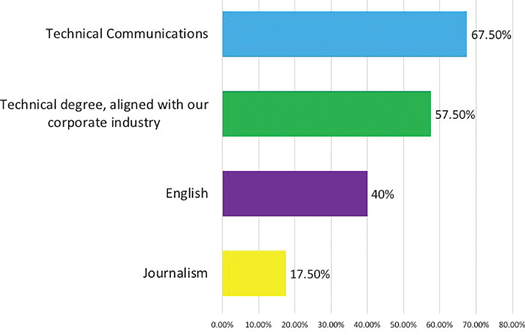
Collaboration
Collaboration has always been a critical competency in a mature information development organization, and that has not changed. Publishing end-user materials often requires the coordination, input, and approval of subject matter experts, product managers, as well as legal, safety, marketing, and training organizations. Figure 4 shows the roles that several of these organizations play in user-facing content development at CIDM-member companies.
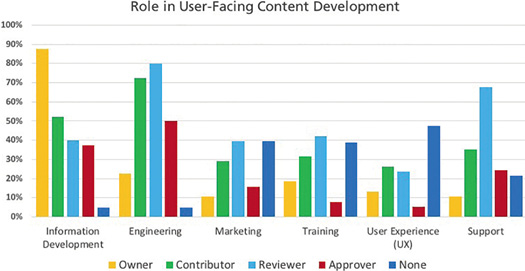
In fact, collaboration is so important that many members report that they have specific initiatives targeted solely at fostering those relationships. Yet in today’s global environment, it isn’t an easy goal. Eighty-eight percent of CIDM members report that they are distributed across multiple sites, and almost half of those indicate their team is spread over more than five sites.
Planning
With the importance of collaborating with so many teams, information development groups might find themselves spread thin. In a 2016 member study, almost three-quarters of information development teams working in an Agile development organization reported that each information developer supported at least two Scrum teams, with twenty percent supporting more than five (see Figure 5).
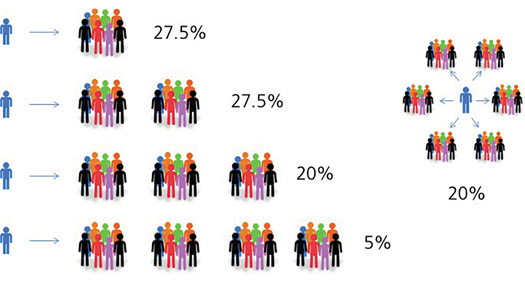
Obviously, the fewer teams or projects supported, the more attention each person can give to producing superior content, but the actual number of projects or teams an individual can support varies based on industry, type of content being created, experience of the team, and many other factors. Nevertheless, the number one question asked of CIDM continues to be: “What is the appropriate ratio of writer to subject matter expert (SME)?”
As expected, these ratios vary significantly across CIDM members (as shown in Figure 6), leading us to continue to assert that writer to SME ratios themselves are not an indicator of process maturity. The differentiator is actually the ability to recognize limits and commit resources appropriately. Mature information development teams plan their activities based on available resources, taking on only the projects or development teams that they have the appropriate head count to support.
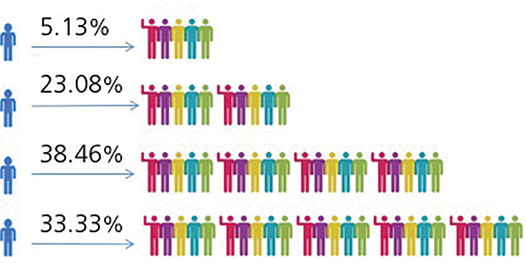
Budgeting, Estimating, Scheduling, and Tracking
The ability to determine the number of projects to commit to (the maturity characteristic of budgeting) or to negotiate an appropriate due date based on the resources available (the maturity characteristic of estimating and scheduling) depends heavily on the availability of good historical metrics (the maturity characteristic of tracking). Mature organizations not only know how much it costs to create various types of content, but also understand the factors that may influence future performance (see Figure 7). Budgets are either set based on the projected workload for the year or influenced by the number of projects the department takes on. Individual projects are estimated and scheduled based on their scope and how they compare to the historical projects. For the duration of each individual project and across the entire year, progress is tracked and performance measured to make incremental adjustments to meet promises.
Dependency |
Ranking |
Factor |
||||
|---|---|---|---|---|---|---|
Product availability |
1 | 2 | 3 | 4 | 5 | 0.80 |
Information availability |
1 | 2 | 3 | 4 | 5 | 0.95 |
Prototype availability |
1 | 2 | 3 | 4 | 5 | 0.90 |
SME availability |
1 | 2 | 3 | 4 | 5 | 1.05 |
Number of reviewers |
1 | 2 | 3 | 4 | 5 | 1.00 |
Writing experience |
1 | 2 | 3 | 4 | 5 | 1.00 |
Technical knowledge |
1 | 2 | 3 | 4 | 5 | 1.00 |
Audience awareness |
1 | 2 | 3 | 4 | 5 | 1.05 |
Tool familiarity |
1 | 2 | 3 | 4 | 5 | 0.95 |
Team collaboration |
1 | 2 | 3 | 4 | 5 | 0.95 |
Adjustment factor |
0.68 |
|||||
Figure 7. Project dependencies influencing level of effort
Unfortunately, no recent CIDM studies reflect current practices in gathering metrics. Our upcoming 2018 benchmarking study will rectify this situation.
Information Design
Mature organizations do not rest on their laurels, but continually work to improve processes and end products. Although most of these improvements are not visible outside an organization, maturity in the area of information design is manifested in the end products. Without industry leaders demonstrating strong practices in this area, the industry as a whole might still be creating printed user guides. Instead, data from the 2017 CIDM/DCL Trends Survey of almost 400 information development professionals shows that less than 15 percent of the represented organizations still produce printed content. Social content (including videos), mobile content, and dynamic information portals have all overtaken what used to be the norm, and, for the first time since the annual survey has been conducted, HTML topics have overtaken electronic PDF content as the most common type of content (see Figure 8).
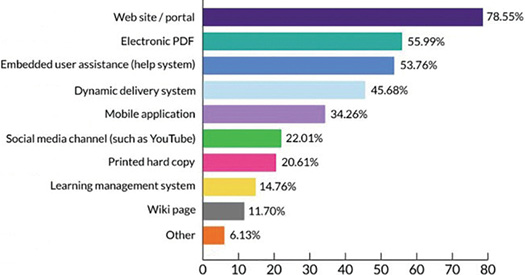
Quality Assurance
With the rise in popularity of automated quality checkers, rumors have circulated about the demise of the professional editor. Although quality assurance certainly remains a characteristic of a mature organization, how is it best achieved? Among CIDM members, editors still remain a critical part of the team, with 67 percent reporting they have dedicated editors on staff (second only to writers, as shown Figure 9). But rather than correcting capitalization, policing word choice, and adding or removing commas, editors in mature organizations are able to concentrate their efforts on developmental editing, allowing quality tools to supplement their primary work—to ensure user needs are met through clear, concise, well-structured content.
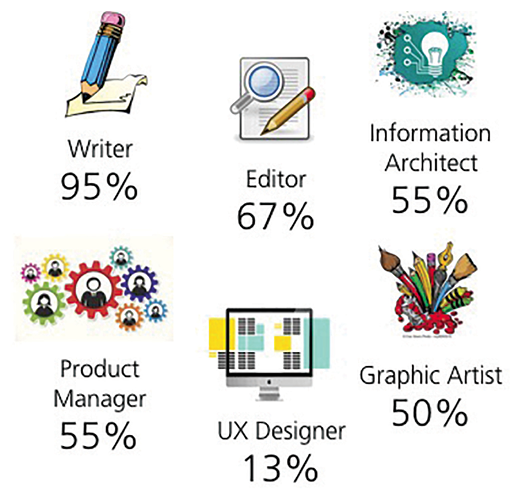
User Awareness
The proof is in the pudding, as they say. While CIDM members may set an example in managing their content development, what do users think of the final output? Are information developers even aware of user needs and expectations? Are they measuring how well they meet those requirements? Honest answers from CIDM members in 2016 return a somewhat lukewarm response. As shown in Figure 10, 55 percent do believe that users have adequate representation, but a disappointing 22.5 percent report there is still poor or no consideration of user needs during information development.
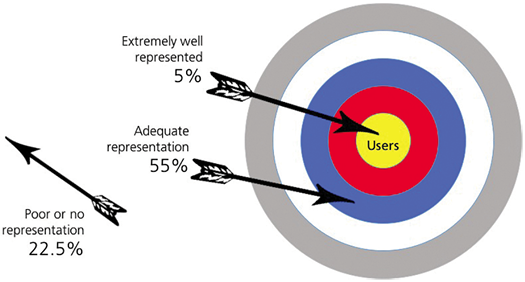
The fact that some otherwise mature information development organizations are struggling to keep users front and center by no means invalidates its inclusion as a primary indicator of organizational health. Mature organizations recognize their areas of weaknesses and look for ways to improve. Informal data from member discussions and conference polls reveal that user awareness is an area of focus for improvement amongst CIDM members.
The Importance of Information Development
Enrique Jardiel Poncela, a Spanish playwright in the early 1900s, once said, “When something can be read without effort, great effort has gone into its writing.” Clearly the characteristics of a mature information development organization take effort, time, and money to develop and maintain. The value of that effort, however, is appreciated by the end user and the corporation alike. As you consider where you are on the road to information development process maturity, keep your eye on the prize: CIDM members report that the contributions of a mature organization are increasingly recognized as critical to the overall success and reputation of the company as a whole (see Figure 11).
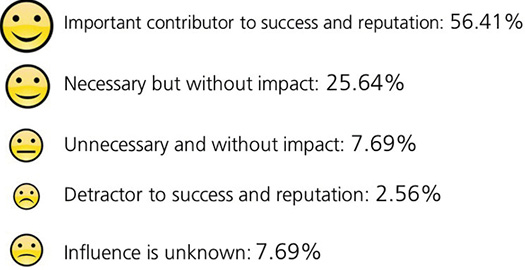
Interested in more benchmarking data? Want to participate in similar studies? The Center for Information Development Management invites you to join. See https://www.infomanagementcenter.com/membership/ for information about its benefits and how to join.
DAWN STEVENS (dawn.stevens@comtech-serv.com) is the President and Owner of Comtech Services and the Director of the Center for Information-Development Management. With over 28 years of experience, including 17 years at Comtech, Dawn has practical experience in virtually every role within a documentation and training department, including project management, instructional design, writing, editing, and multimedia programming. With both engineering and technical communication degrees, Dawn combines a solid technical foundation with strong writing and design skills to identify and remove the challenges her clients face in producing usable, technical information and training.

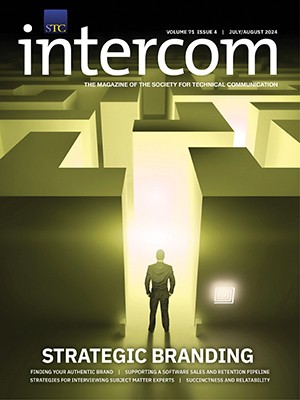
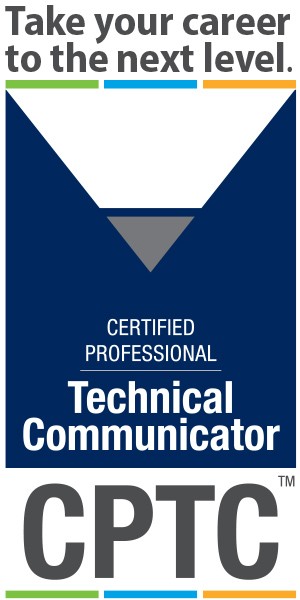
I wish Intercom articles would show when they were published other than having to decipher weird URLs.